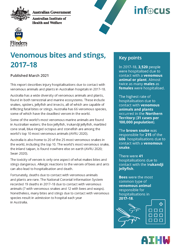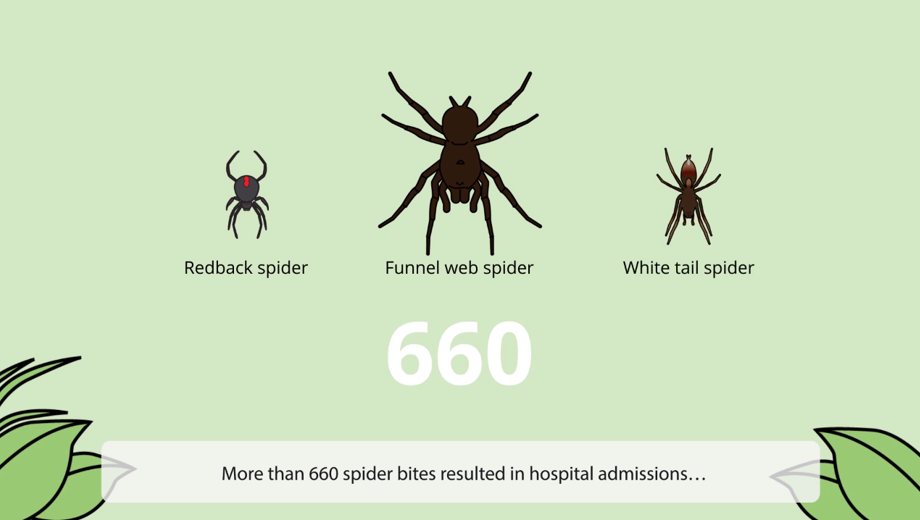Summary
Australia has a wide diversity of venomous animals and plants, found in both terrestrial and marine ecosystems. These include snakes, spiders, jellyfish and insects, all of which are capable of inflicting fatal bites or stings. Australia has 66 venomous species, some of which have the deadliest venom in the world.
Some of the world’s most venomous marine animals are found in Australian waters; the box jellyfish, Irukandji jellyfish, marbled cone snail, blue ringed octopus and stonefish are among the world’s top 10 most venomous animals (AVRU 2020).
Australia is also home to 20 of the 25 most venomous snakes in the world, including the top 10. The world’s most venomous snake, the inland taipan, is found nowhere else on earth (AVRU 2020; Swan 2020).
The toxicity of venom is only one aspect of what makes bites and stings dangerous. Allergic reactions to the venom of bees and ants can also lead to hospitalisation and death.
Fortunately, deaths due to contact with venomous animals and plants are rare. The National Coronial Information System records 19 deaths in 2017–18 due to contact with venomous animals (7 with venomous snakes, 12 with bees and wasps). Nonetheless, many bites and stings due to contact with venomous species result in admission to hospital each year in Australia.




